Electrical work is an essential aspect of our daily lives. From powering our homes and workplaces to providing light and heat, we rely heavily on electricity. However, working with electricity can be dangerous and even deadly if not handled correctly.
The question of whether being an electrician is dangerous is a complex one. On one hand, electricians receive extensive training and are equipped with safety measures and protocols to ensure their safety. On the other hand, electrical work is inherently hazardous and can result in serious injuries or fatalities. The risks associated with electrical work include electric shocks, burns, falls, and exposure to hazardous chemicals.
To better understand the dangers electricians face, it is important to explore the nature of their work. Electricians are responsible for installing and maintaining electrical systems, which can involve working in confined spaces, on elevated platforms, and in hazardous environments such as construction sites. They are also required to work with high-voltage electricity, which can result in electric shocks and burns if not handled correctly.
In addition to the physical hazards of electrical work, electricians also face the risk of developing long-term health problems from exposure to hazardous materials such as asbestos and lead. These materials can be found in old buildings and pose a risk to electricians who may be required to work in these environments.
Is Being an Electrician a Dangerous Profession?
Electricians work with electricity every day, which can be a risky and dangerous job. However, with the proper training and safety precautions, being an electrician does not necessarily have to be a dangerous profession.
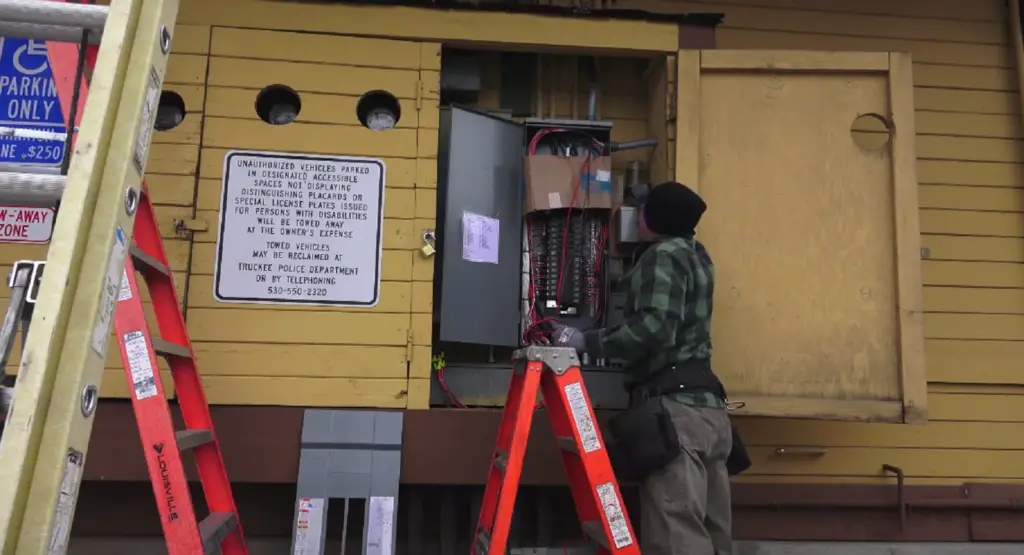
While electricians may face certain risks on the job, such as electrocution or electric shock, it is important to note that the vast majority of electrical injuries are non-fatal. According to the Electrical Safety Foundation International, 98% of all electrical injuries are non-fatal. Additionally, the Bureau of Labor Statistics reports that in 2020, there were 15 fatal work injuries in the electrical wiring installation contractors industry, which includes most electricians, compared to 195 fatal work injuries in the electrical power generation, transmission, and distribution industry.
One of the most significant risks electricians face is the risk of electrocution. Electrocution occurs when a person is exposed to a lethal amount of electrical energy. To avoid electrocution, electricians must be knowledgeable about electrical safety procedures and take all necessary precautions. This includes ensuring that the work area is free of any water or moisture, using proper grounding techniques, and avoiding contact with any electrical sources while standing on a wet or damp surface.
Another risk electricians face is electric shock, which can occur when a person comes into contact with an electrical energy source. The severity of the shock depends on a variety of factors, including the voltage of the electricity, the duration of the exposure, and the path the electricity takes through the body. To avoid electric shock, electricians must always use proper safety equipment, including gloves and safety glasses, and must ensure that all electrical equipment is properly grounded and de-energized before beginning work.
Despite the risks associated with being an electrician, it is possible to work in this profession safely and effectively. With the right training, education, and safety measures in place, electricians can perform their work without endangering themselves or others. It is important for electricians to stay up to date with the latest safety regulations and procedures to ensure that they are always working in the safest possible manner.
Electricians’ On-the-Job Injuries and Deaths
According to data from the Bureau of Labor Statistics (BLS), in 2022, there were 195 fatal work injuries in the electrical power generation, transmission, and distribution industry. This figure represents an increase of 14% from 2022. However, it is important to note that the majority of these fatalities occurred in the power generation, transmission, and distribution industry, which is different from the work done by most electricians.
In fact, the BLS reports that in 2020, there were 15 fatal work injuries in the electrical wiring installation contractors industry, which includes most electricians [1].
In addition to fatal work injuries, electricians also experience non-fatal work injuries. According to the BLS, in 2020, there were 2,960 non-fatal occupational injuries and illnesses involving days away from work in the electrical wiring installation contractors industry. These injuries and illnesses resulted in a median of 10 days away from work.

Getting Electrocuted vs. Having an Electric Shock
One of the primary risks associated with being an electrician is the risk of electrocution. Electrocution occurs when a person is exposed to a lethal amount of electrical energy. However, it is important to note that most electrical injuries are not fatal. In fact, according to the Electrical Safety Foundation International (ESFI), 98% of all electrical injuries are non-fatal.
One type of non-fatal electrical injury that electricians may experience is an electric shock. An electric shock occurs when a person comes into contact with an electrical energy source. The severity of the shock depends on a variety of factors, including the voltage of the electricity, the duration of the exposure, and the path the electricity takes through the body. Mild electric shocks may cause a tingling sensation or a minor burn, while more severe shocks can cause muscle contractions, loss of consciousness, or even death [2].

How to Work Safely as an Electrician?
Electricians can take steps to minimize their risk of electric shock:
- One important step is to always follow electrical safety procedures, including turning off the power before working on electrical equipment and using insulated tools. Electricians should also wear appropriate personal protective equipment, such as gloves and safety glasses, when working with electricity;
- Proper use of personal protective equipment, such as gloves and safety glasses, is essential for protecting against electrical shock and other hazards. Additionally, electricians should always follow proper safety procedures, such as turning off power sources and testing equipment before beginning work;
It is important for electricians to receive regular safety training and education to stay up to date on the latest safety regulations and procedures. This helps to ensure that they are able to perform their work safely and effectively while minimizing the risk of accidents and injuries. By prioritizing safety on the job, electricians can help to create a safe and secure working environment for themselves and their colleagues [3].
Electrical Safety: What Is Lock Out/Tag Out (LOTO)?
As an electrician, safety is a top priority on the job.

LOTO involves physically disconnecting a piece of equipment from its energy source and then locking and tagging the energy source to prevent it from being reconnected. This ensures that the equipment cannot be energized while maintenance or repair work is being performed, which helps to prevent accidents and injuries.
There are several steps involved in properly implementing a LOTO procedure:
- First, the electrician must identify all energy sources that need to be disconnected, such as electrical power sources or mechanical equipment;
- Next, the electrician must physically disconnect the equipment from the energy source and then lock it out using a padlock or similar device;
- Finally, the electrician must tag the equipment with a warning label to indicate that it should not be re-energized until the lock and tag are removed;
LOTO is an essential safety procedure for any electrician working on electrical equipment. It helps to prevent accidents and injuries by ensuring that equipment cannot be accidentally energized while work is being performed. It is crucial that electricians receive proper training on LOTO procedures to ensure that they are able to perform this safety practice correctly and effectively [4].
5 Dangers Faced When You Become an Electrician
1. Falls and Trips
Falls and trips are a significant hazard for electricians, especially those working on construction sites or in industrial settings. Electricians often need to work at height, climbing ladders or scaffolds to reach electrical equipment or systems. These elevated workspaces can be unstable, and even a small misstep can result in a fall. Additionally, electricians often need to move quickly around job sites, which can increase the risk of tripping or slipping on uneven surfaces.
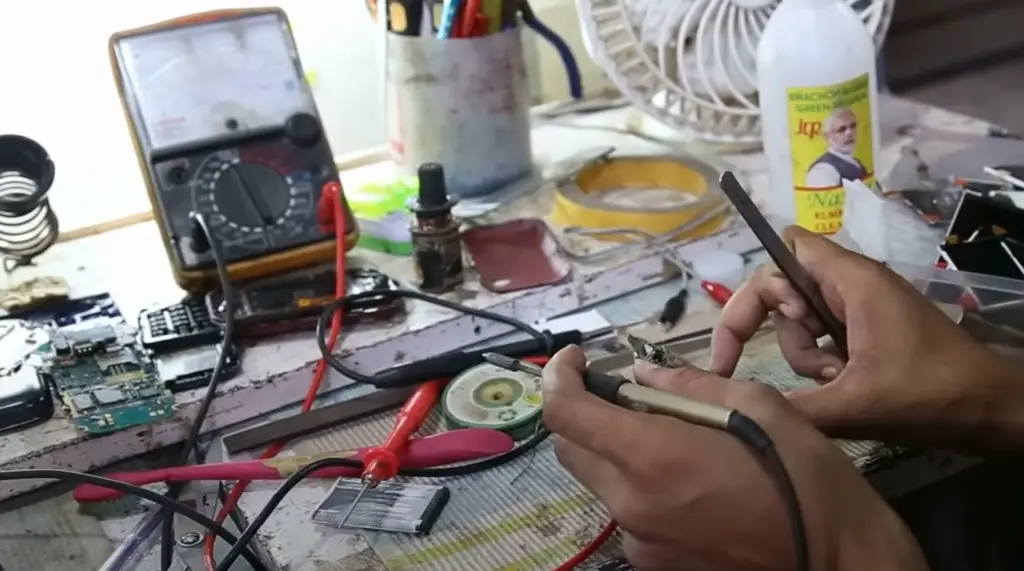
Falls and trips can result in serious injuries, including broken bones, head injuries, and even fatalities. To minimize the risk of falls and trips, electricians must take precautions such as wearing appropriate footwear with good traction, using ladders and scaffolds correctly, and following safety guidelines for working at height.
2. Electric Shock
Electricians work with high-voltage electricity, which can be deadly if not handled correctly. Electric shock occurs when the body becomes part of an electrical circuit, and the electric current flows through it. The severity of an electric shock can vary depending on the voltage, the duration of exposure, and the path of the current through the body.
Electric shock can result in a range of injuries, including burns, muscle contractions, and even death. To minimize the risk of electric shock, electricians must follow safety guidelines such as wearing protective equipment, de-energizing electrical systems before working on them, and ensuring that electrical equipment is properly grounded.
3. Toxic Substance Exposure
Electricians may also be exposed to toxic substances while working, such as asbestos, lead, and other hazardous chemicals. These substances can be found in old electrical equipment and wiring, as well as in insulation materials and construction materials used in buildings.
Exposure to these substances can result in a range of health problems, including respiratory issues, cancer, and neurological damage. To minimize the risk of toxic substance exposure, electricians must follow safety guidelines such as wearing appropriate protective equipment, avoiding contact with hazardous materials, and ensuring that workspaces are well-ventilated.
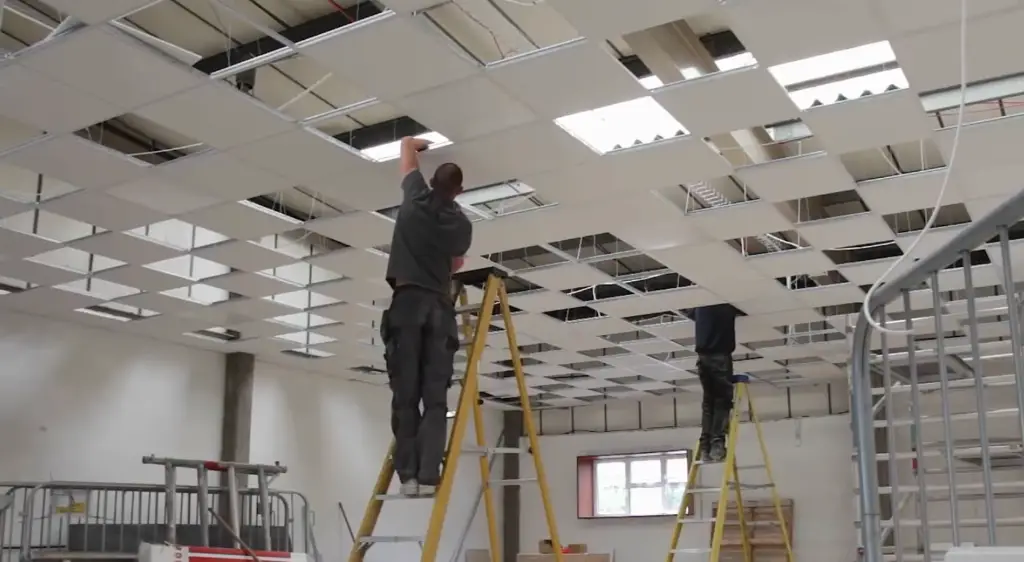
4. Cuts and Abrasions
Electricians often work with sharp tools and equipment, such as wire cutters, pliers, and screwdrivers. These tools can cause cuts and abrasions if not handled correctly or if they become damaged or worn. Additionally, electricians may need to work in tight spaces or in areas with sharp edges or protrusions, which can increase the risk of injury.
Cuts and abrasions can result in infections and other health issues, especially if they are not treated promptly. To minimize the risk of cuts and abrasions, electricians must follow safety guidelines such as using sharp tools correctly, wearing appropriate protective equipment such as gloves, and ensuring that workspaces are well-lit and free from sharp edges or protrusions.
5. Excess Strain and Stress
Electricians often work long hours and may need to work in physically demanding environments, such as crawling through tight spaces or carrying heavy equipment. This can result in excess strain and stress on the body, leading to a range of health problems such as back pain, joint pain, and muscle strains.
The Risks of Being an Electrician
You Won’t Be Able to Become a Full-Fledged Electrician Right Away
One of the first risks to consider is that you won’t be able to become a full-fledged electrician right away. In order to become a licensed electrician, you’ll need to complete a rigorous apprenticeship program that can take several years to complete. During this time, you’ll work under the supervision of a licensed electrician and gain hands-on experience in the field. This can be challenging for those who are eager to start working in the field right away.
You’ll Have to Work a Lot of Odd Hours
Another risk to consider is that you’ll have to work a lot of odd hours. Electricians often work on construction sites or in other environments where work is scheduled around other trades or building activities. This can mean working early mornings, late nights, or even weekends. This can be challenging for those with families or other commitments, and can also lead to a disrupted sleep schedule.
Your Job Will Often Be Physically Demanding
In addition to odd hours, being an electrician can be physically demanding. Electricians must be able to lift heavy equipment and materials, work in cramped spaces, and climb ladders or scaffolding. This can be taxing on the body over time and can lead to musculoskeletal injuries.
Your Job Will Also Be Dangerous at Times
Finally, being an electrician also comes with inherent risks due to the nature of the work. Electricians work with high-voltage electrical systems, which can be dangerous if not handled properly. There is also the risk of electrocution, falls, and other accidents on the job. It’s important for electricians to follow proper safety protocols and procedures to minimize the risk of injury or death.

The Rewards of Being an Electrician
You Won’t Rack Up a Mountain of Student Loan Debt
One of the biggest benefits of pursuing a career as an electrician is that you won’t have to take on a significant amount of student loan debt. While many traditional college degree programs can cost tens or even hundreds of thousands of dollars, electrician training is typically much more affordable. Many electricians begin their careers by completing an apprenticeship program, which provides on-the-job training and often pays a modest salary. This means that you can start earning a living and building your career without worrying about crushing student loan debt.
You Shouldn’t Ever Have Trouble Finding a Job
Another benefit of pursuing a career as an electrician is that job opportunities are typically plentiful. As long as there is construction and infrastructure development happening, there will be a need for skilled electricians. In fact, the Bureau of Labor Statistics projects that employment for electricians will grow by 8% between 2019 and 2029, which is much faster than the average for all occupations. This means that you’re likely to have job security and stability throughout your career [6].
You Could Make a Good Salary
In addition to job security, being an electrician can also be a lucrative career choice. According to the Bureau of Labor Statistics, the median annual wage for electricians was $56,180 in May 2022. The highest 10% of electricians earned more than $96,580 per year. Keep in mind that these figures can vary depending on factors like location, experience, and industry. However, even entry-level electricians can typically expect to earn a decent salary and have opportunities for advancement over time [7].
You’ll Also Make a Difference in People’s Lives
Finally, one of the most rewarding aspects of being an electrician is the opportunity to make a real difference in people’s lives. Electricians play a critical role in ensuring that homes, buildings, and infrastructure are safe and functional. Whether you’re installing electrical systems in a new building or repairing an electrical issue in someone’s home, you’re helping to improve people’s quality of life and keep them safe from potential hazards.
In addition to the practical impact of your work, being an electrician can also offer a sense of personal fulfillment. Many electricians take pride in the work they do and the expertise they’ve developed over time. Knowing that you have the skills and knowledge to tackle complex electrical problems can be incredibly empowering and satisfying.

Why Does US News Rank Electrician Work as Being Stressful?
One reason electrician work is considered stressful is due to the physical demands of the job. Electricians often work in challenging environments, such as cramped spaces or high elevations, and must be able to lift heavy equipment and materials. This can be physically taxing and stressful, especially over long periods of time.
Another reason electrician work is considered stressful is due to the high level of responsibility that comes with the job. Electricians must ensure that all electrical work is performed safely and up to code, which requires a high level of attention to detail and precision. Any mistakes or oversights can have serious consequences, including property damage, injury, or even death. This level of responsibility can be stressful for electricians, as the consequences of mistakes can be significant.
In addition to the physical demands and high level of responsibility, electricians also face other stressors on the job. This can include working in hazardous environments with potentially dangerous equipment, such as high-voltage electrical systems. Electricians must also work in a variety of different environments, from construction sites to residential homes, which can be stressful due to the need to adapt to different working conditions and safety protocols.
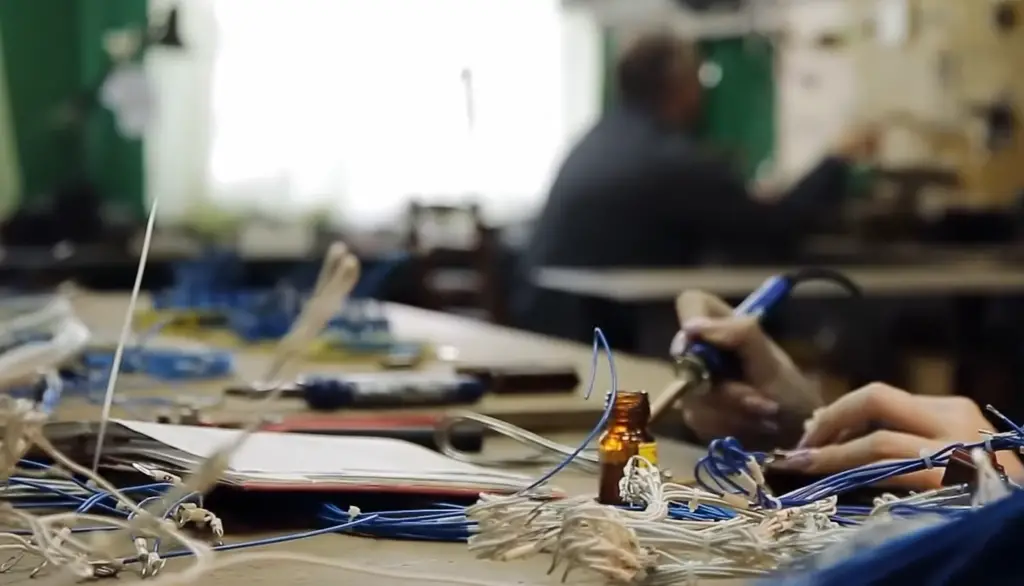
FAQ
1. What is the most dangerous part of being an electrician?
The most dangerous part of being an electrician is the risk of electrical shock. Electricians work with live wires and electrical systems that can carry high-voltage currents, which can cause severe or fatal injuries if not handled properly. Even a small shock can be enough to disrupt the body’s electrical system and cause serious injury or death.
2. What are the hazards of the job as an electrician?
The hazards of the job as an electrician include falls and trips, electric shock, toxic substance exposure, cuts and abrasions, and excess strain and stress. These hazards can cause injuries ranging from minor cuts and bruises to severe burns, electric shock, and even death.
3. Do electricians get shocked a lot?
Electricians are trained to work safely with electrical systems and follow strict safety guidelines to minimize the risk of electrical shock. However, accidents can still happen, and electricians may get shocked from time to time. The frequency of electric shocks depends on the individual electrician’s experience, training, and adherence to safety guidelines.
4. What are the 4 main types of electrical injuries?
Electrocution occurs when the body becomes part of an electrical circuit, causing current to flow through it. Electric shock occurs when current flows through the body but does not cause electrocution. Burns can occur from direct contact with electricity or from a fire caused by electrical arcing. Falls can occur when an electrician is working at a height or on a ladder [8].
5. What are the signs of electrocution?
The signs of electrocution can include burns or injuries at the point of contact, loss of consciousness, irregular or stopped breathing, cardiac arrest, and muscle contractions. In severe cases, electrocution can be fatal.
6. Can electricity knock you out?
Yes, electricity can knock you out if the shock is strong enough to disrupt the body’s nervous system or cause a loss of consciousness.
7. How much current can stop the heart?
As little as 100 milliamps of current can cause fibrillation of the heart, which can be fatal [9].
8. What kills a person – voltage or current?
It is the current that kills a person, not the voltage. Voltage is the force that drives the current, but it is the current that can cause injury or death.
9. Are electricians unhealthy?
Electricians may be at risk for certain health problems due to the physical demands of the job and exposure to toxic substances. However, with proper safety measures and self-care, electricians can maintain good health and avoid many of the health risks associated with the job.
10. Is an electrician stressful?
The job of an electrician can be stressful, as it requires attention to detail, problem-solving skills, and the ability to work under pressure. However, many electricians find the work rewarding and enjoy the challenges and variety of the job.
11. Do electricians get tired?
Electricians may get tired of the physical demands of the job, such as climbing ladders or carrying heavy equipment. However, proper rest and self-care can help prevent fatigue and maintain good health.
12. Do electricians get hurt often?
Electricians may be at risk for injuries due to the hazards of the job, such as falls, cuts, and electrical shock. However, with proper safety measures and training, many of these injuries can be prevented [10].
13. Do electricians get arthritis?
Electricians may be at risk of developing arthritis due to the repetitive motions involved in their work. For example, twisting wires or gripping tools for prolonged periods of time can cause strain on the hands and wrists leading to arthritis.
14. What are the top 3 electrical hazards?
The top 3 electrical hazards are electrical shock, arc flash, and arc blast. Electrical shock occurs when the body comes into contact with live electrical current, while arc flash and arc blast occur when electrical current jumps or arcs across a gap, creating intense heat and pressure that can cause severe burns, hearing damage, and even death.
15. What are the most serious electrical hazards?
The most serious electrical hazards are those that can cause fatal injuries or permanent damage, such as electrical shock, arc flash, and arc blast. These hazards can cause severe burns, tissue damage, and damage to the nervous system or organs.
16. What voltage causes the most fatal shocks?
However, even low-voltage shocks can be dangerous if they occur in the wrong part of the body or for an extended period of time [11].
17. How can electrical accidents be avoided?
Electrical accidents can be avoided by following strict safety guidelines, using appropriate personal protective equipment, and receiving proper training and certification. It is also important to regularly inspect and maintain electrical equipment and systems to ensure they are in good working condition.
18. Do electricians get bad knees?
Electricians may be at risk for developing knee problems due to the physical demands of the job, such as climbing ladders and kneeling. However, proper body mechanics and regular exercise can help prevent knee problems and maintain good joint health.
19. Do electricians get Parkinson’s?
There is no evidence to suggest that electricians are at an increased risk of developing Parkinson’s disease. Parkinson’s is a neurodegenerative disorder that is typically caused by a combination of genetic and environmental factors.
20. What is an electrical burn?
An electrical burn is a type of burn injury caused by electricity. When electricity passes through the body, it can cause a burn at the point of contact or along the path of the electrical current. Electrical burns can be classified into three types: thermal burns, arc burns, and contact burns.
21. What is the least stressful trade?
The answer to this question can vary depending on individual preferences and work environments.
However, some professions that are often considered to be less stressful than others include:
- Librarian: This job involves managing books, research materials, and digital resources. It requires attention to detail, organization, and a calm demeanor;
- Data Entry Clerk: This job involves entering data into computer systems accurately and efficiently. It is a relatively low-pressure job that requires focus and attention to detail;
- Landscaper: This job involves maintaining outdoor spaces, such as gardens, parks, and lawns. It is a physically demanding job, but it can be satisfying and relaxing to work in nature;
- Accountant: This job involves analyzing financial data and preparing financial reports for businesses and individuals. It requires attention to detail and analytical skills, but it can be less stressful than other jobs that require constant interaction with clients;
- Graphic Designer: This job involves creating visual designs for various purposes, such as advertising, branding, and web design. It is a creative job that can be fulfilling for those who enjoy artistic expression [12];
22. What is the least physically demanding trade?
Again, this can vary depending on individual preferences and work environments.
However, some professions that are generally considered to be less physically demanding include:
- Writer: This job involves creating written content for various purposes, such as books, articles, and marketing materials. It is a mentally demanding job but requires minimal physical effort;
- Programmer: This job involves creating and maintaining software programs and systems. It is a desk job that requires a lot of mental effort but is not physically demanding;
- Copy Editor: This job involves reviewing written content for errors and inconsistencies. It requires attention to detail and strong language skills, but it does not involve physical labor;
- Translator: This job involves translating written or spoken content from one language to another. It requires language skills and attention to detail but does not involve physical labor;
- Virtual Assistant: This job involves providing administrative support to individuals or businesses remotely. It requires organizational skills and attention to detail, but it is not physically demanding;
23. Can I take a bath after an electric shock?
If you have been shocked by electricity, it is important to seek medical attention immediately. In some cases, electrical shock can cause serious injury or death.
As for taking a bath after an electrical shock, it is generally not recommended. Even if the shock was relatively mild, it can cause burns or other injuries that could be exacerbated by exposure to water. It is important to seek medical attention and follow the advice of your doctor or other medical professional.
24. What is the survival rate of electrical burns?
The survival rate of electrical burns depends on the severity of the injury and the promptness of medical treatment. Electrical burns can be very serious and can cause significant damage to the skin, tissues, and organs. In some cases, electrical burns can be fatal.
According to the American Burn Association, the survival rate for electrical burns in the United States is around 80 percent. However, this number can vary depending on the age and overall health of the person, the severity of the burn, and the quality of medical care received [13].
It is important to seek medical attention immediately if you have been burned by electricity, even if the burn appears to be relatively mild. Electrical burns can cause internal damage that may not be immediately visible, and prompt medical treatment can help prevent further injury or complications.
25. Why is electric shock so painful?
Electric shock can be painful because it causes a disruption in the normal function of the nervous system. When you are shocked by electricity, the electrical current can interfere with the transmission of nerve impulses, causing a variety of sensations, including pain.
Useful Video: STOP! The TOP dangers of being an electrician
References
- https://porterchester.edu/news-events/being-electrician-dangerous-profession
- https://www.reddit.com/r/electricians/comments/2kjrqf/how_dangerous_is_this_job/
- https://www.iec-cincy.com/can-electrician-work-be-dangerous/
- https://intercoast.edu/blog/sitting-on-the-electric-fence-the-risks-and-rewards-of-being-an-electrician/
- https://www.pwaelectricalservices.com.au/blog/2019-06-25-is-being-an-electrician-dangerous
- https://blog.scitraining.com/how-dangerous-is-being-an-electrician/
- https://1stelectricians.co.uk/blog/is-it-dangerous-to-be-an-electrician/
- https://www.electricianclasses.com/the-dangers-of-being-an-electrician/
- https://www.electricalknowledge.com/how-dangerous-is-being-an-electrician/
- https://electricianapprenticehq.com/dangers-of-being-an-electrician/
- https://electricianpal.com/is-being-an-electrician-dangerous/
- https://www.electricsontap.com/ufaqs/how-dangerous-is-the-job-of-an-electrician
- https://www.gormanlightning.com/blog/2018/december/why-does-us-news-rank-electrician-work-as-being-/





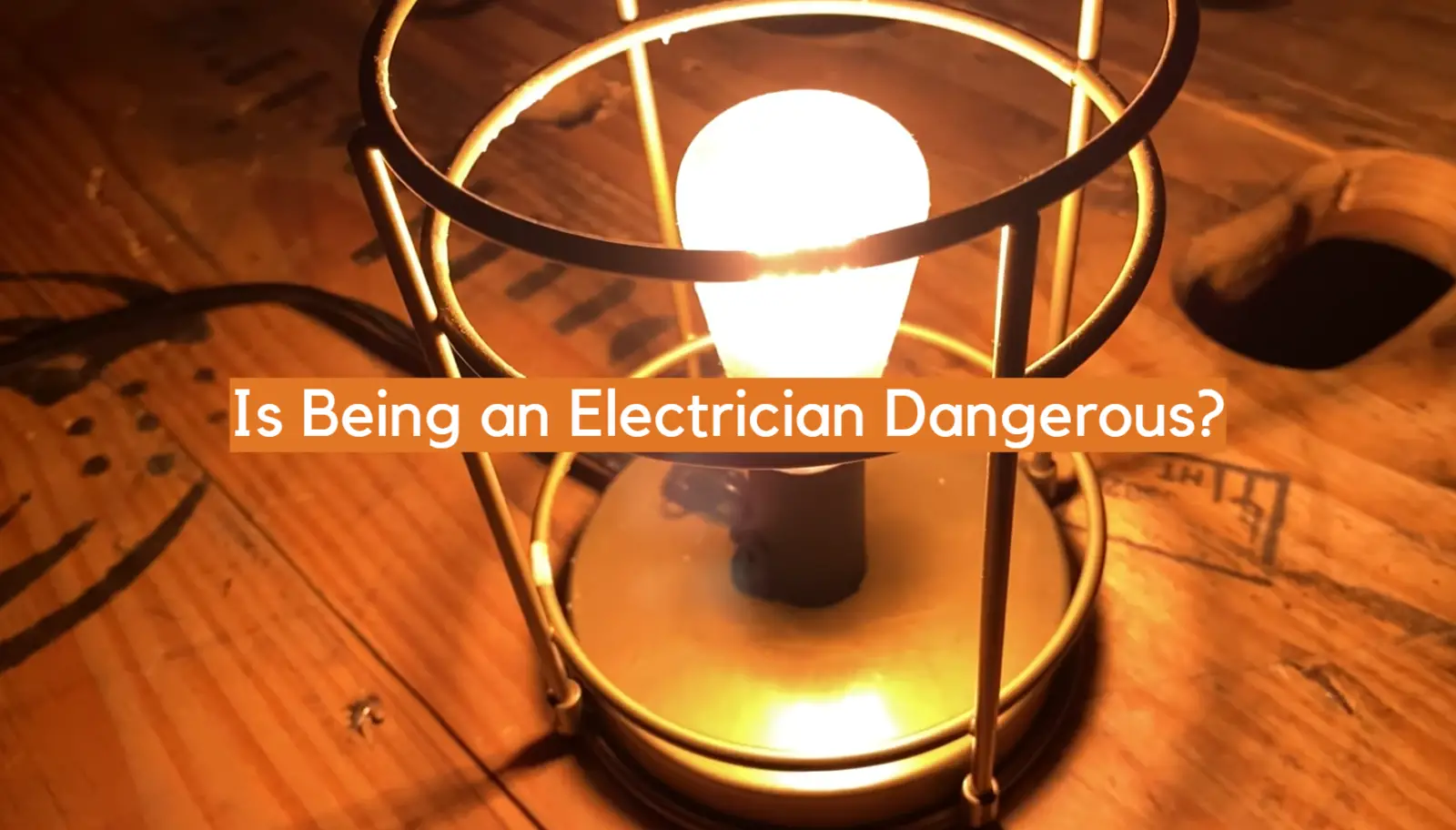





Leave a Reply